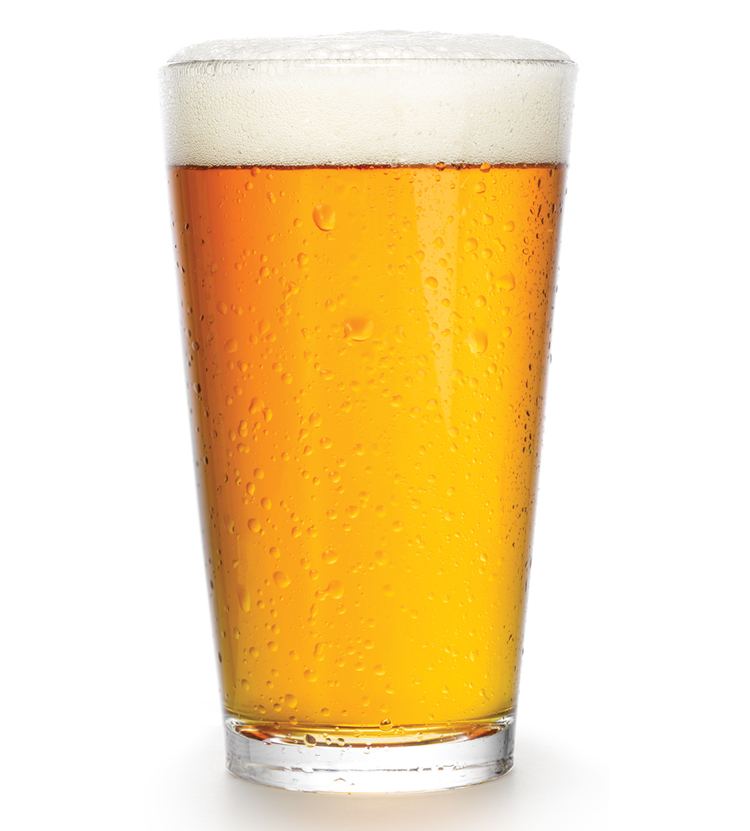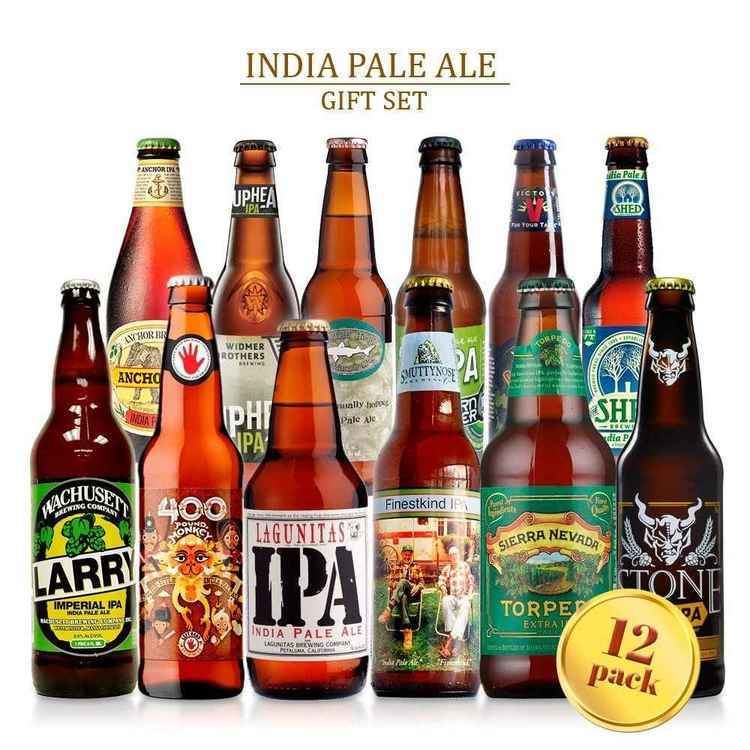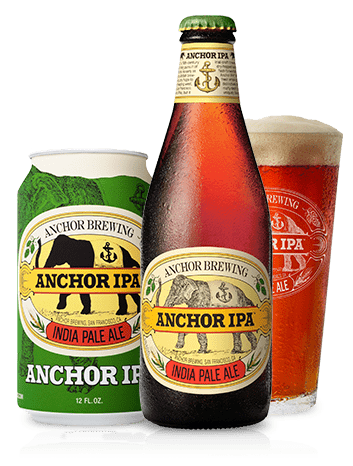Country of origin England Color (SRM) 6 - 14 Original Gravity 1.050 - 1.075 | Alcohol by volume 5.0% - 9.0% Bitterness (IBU) 40 - 60 Final Gravity 1.010 - 1.018 | |
 | ||
Similar Ale, Hops, Stout, Lager, Porter | ||
What are india pale ale imperial ipa beer brewing
India pale ale (IPA) is a hoppy beer style within the broader category of pale ale. The ale itself is so named for its historical background as an exported ale; beers crafted in England before the Columbian Exchange had a limited shelf-life when shipped across the open seas, spoiling quickly in the humid and hot air of coastal waters. Pale ales that were to be sent to India for trade had additional hops mixed in when shipped to extend their lifespan, thus earning the name of "India pale ale" to the purveyors of this new breed of ale.
Contents
- What are india pale ale imperial ipa beer brewing
- Ipa india pale ale history and styles
- History
- United Kingdom
- Canada and the United States
- References

The first known use of the term "India pale ale" is an advertisement in the Sydney Gazette and New South Wales Advertiser in 1829. It was also referred to as pale ale as prepared for India, India ale, pale India ale, or pale export India ale, the high hop content preserving the beer for the long journey from England to India.

Ipa india pale ale history and styles
History
The term pale ale originally denoted an ale that had been brewed from pale malt. The pale ales of the early 18th century were lightly hopped and quite different from today's pale ales. By the mid-18th century, pale ale was mostly brewed with coke-fired malt, which produced less smoking and roasting of barley in the malting process, and hence produced a paler beer. One such variety of beer was October beer, a pale well-hopped brew popular among the landed classes, who brewed it domestically; once brewed it was intended to cellar two years.

Among the first brewers known to export beer to India was George Hodgson's Bow Brewery, on the Middlesex-Essex border. Bow Brewery beers became popular among East India Company traders in the late 18th century because of the brewery's location near the East India Docks and Hodgson's liberal credit line of 18 months. Ships transported Hodgson's beers to India, among them his October beer, which benefited exceptionally from conditions of the voyage and was apparently highly regarded among its consumers in India. Bow Brewery came into the control of Hodgson's son in the early 19th century, but his business practices alienated their customers. During the same period, several Burton breweries lost their European export market in Russia when the Tsar banned the trade, and were seeking a new export market for their beer.

At the behest of the East India Company, Allsopp brewery developed a strongly-hopped pale ale in the style of Hodgson's for export to India. Other Burton brewers, including Bass and Salt, were eager to replace their lost Russian export market and quickly followed Allsopp's lead. Perhaps as a result of the advantages of Burton water in brewing, Burton India pale ale was preferred by merchants and their customers in India, but Hodgson's October beer clearly influenced the Burton brewers' India pale ales.

Brewer Charrington's trial shipments of hogsheads of "India Ale" to Madras (now Chennai) and Calcutta (now Kolkata) in 1827 proved successful and a regular trade emerged with the key British agents and retailers: Griffiths & Co in Madras; Adam, Skinner and Co. in Bombay (now Mumbai) and Bruce, Allen & Co. in Calcutta.
Early IPA, such as Burton brewers' and Hodgson's, was only slightly higher in alcohol than most beer brewed in his day and would not have been considered a strong ale; however, a greater proportion of the wort was well-fermented, leaving behind few residual sugars, and the beer was strongly hopped. The common story that early IPAs were much stronger than other beers of the time, however, is a myth. While IPAs were formulated to survive long voyages by sea better than other styles of the time, porter was also shipped to India and California successfully. It is clear that by the 1860s, India pale ales were widely brewed in England, and that they were much more attenuated and highly hopped than porters and many other ales.
Demand for the export style of pale ale, which had become known as India pale ale, developed in England around 1840 and India pale ale became a popular product in England. Some brewers dropped the term "India" in the late 19th century, but records indicated that these "pale ales" retained the features of earlier IPAs. American, Australian, and Canadian brewers manufactured beer with the label IPA before 1900, and records suggest that these beers were similar to English IPA of the era.
IPA style beers started being exported to other colonial countries, such as Australia and New Zealand, around this time with many breweries dropping the 'I' in 'IPA' and simply calling them Pale Ales or Export Pales. Many breweries, such as Kirkstall Brewery, sent large quantities of export beer across the world by steam ship to auction off to wholesalers once there.
United Kingdom
The term IPA is commonly used in the United Kingdom for low-gravity beers, for example Greene King IPA and Charles Wells Eagle IPA. IPAs with alcohol by volume of 4% or lower have been brewed in the UK since the First World War, when taxes on beer ingredients greatly increased and brewers responded by lowering the strength of their beers.
Canada and the United States
IPAs have a long history in Canada and the United States, and many breweries there produce a version of the style. Contemporary American IPAs are typically brewed with distinctively American hops, such as Cascade, Centennial, Citra, Columbus, Chinook, Simcoe, Amarillo, Tomahawk, Warrior, and Nugget.
East Coast IPAs are distinguished from West Coast IPAs by a stronger malt presence, which balances the intensity of the hops, whereas hops are more prominent in the western brews, possibly because of the proximity of West Coast breweries to hop fields in the Pacific Northwest. East Coast breweries rely more on spicier European hops and specialty malts than those on the West Coast.
Double IPAs (also referred to as Imperial IPAs) are a stronger, very hoppy variant of IPAs that typically have alcohol content above 7.5% by volume. The style is claimed to have originated with Vinnie Cilurzo, currently the owner of Russian River Brewing Company in Santa Rosa, California, in 1994 at the now-defunct Blind Pig Brewery in Temecula, California. The style has been embraced by the craft brewers of San Diego County, California, to such an extent that double IPAs have been referred to as "San Diego pale ale".
In the United States, IPAs have become extremely popular, helping drive the craft beer renaissance. The style has traditionally been known for being higher in alcohol content (ABV), but in recent years, "session" IPAs lower in ABV have become popular. As the style has grown more popular, many sub-styles have emerged, such as Belgian or White IPAs.
